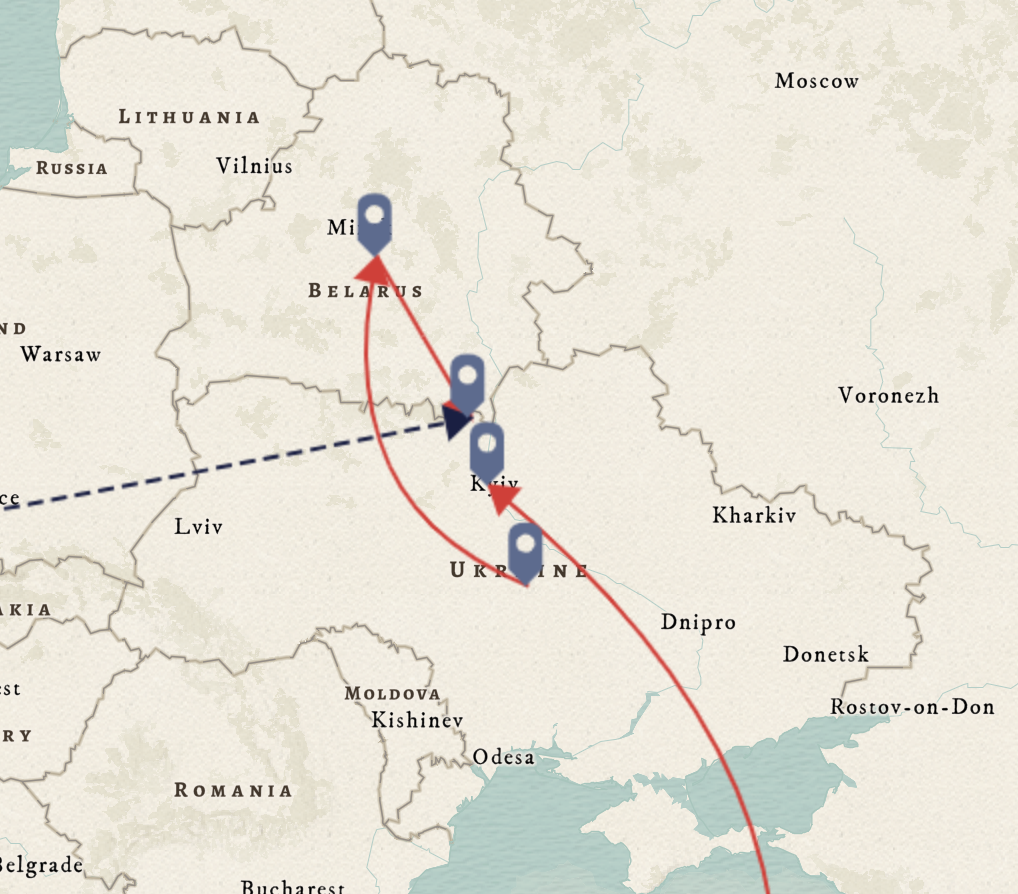“The Chernobyl Symphony” is an original compilation that retells the story of from Chernobyl through music. The composition draws on the experiences of Chernobylites, a term referring to individuals affected by Chernobyl, from a variety of primary and secondary sources. “The Chernobyl Symphony” attempts to evoke emotions similar to those felt by the Chernobylites with iconic sounds ranging from the tick of the Geiger counter to orchestral pieces.
Making “The Chernobyl Symphony”
The power of music is its ability to be simultaneously subjective and universal: each listener draws on their own memories to contextualize the emotions, but the overall sentiment is constant. This unique universality extends to Chernobyl—individuals have their own distinct memories, upbringing, and identities, yet collectively are fearful and anxious. The purpose of this composition is to bring Chernobyl to you, in ways anyone can understand. I cannot promise what you will recall or think while listening to the music, the images in your mind are a compilation of your experiences, perhaps among them are the contents of other exhibits.
“The Chernobyl Symphony” is more than simple background music; it recounts the experience of Chernobyl through music. My personal reactions to the texts depicting the Chernobyl disaster and its subsequent impacts became the foundation of this composition. At 17 minutes, “The Chernobyl Symphony” attempts to recreate this emotional experience. It is an amalgamation of the personal anecdotes of those directly impacted by Chernobyl, as noted in Voices from Chernobyl by Svetlana Alexievich, and my reaction as an exogenous and anachronous party to this experience. One thing became clear during the composition process: while the degree of emotion may vary, the essential feeling remains constant. Those in Pripyat in 1986 and the following years reacted to the accident, and I, learning about those experiences 34 years after the fact on a completely different continent, have the same reaction.
Through familiar sounds, the soundtrack builds upon the construction of Chernobyl and recounts its story in a novel way. When asked to name a sound that one attributes to Chernobyl, a vast majority would reply, “Geiger counters”, the staticky mechanical sound that is so closely tied with the notion of radioactivity dominates the Chernobyl narrative. HBO’s Chernobyl and Stephanie DeGroot’s The Real Chernobyl both utilize the sound of the Geiger counter as an emblem of radioactivity and to quantify the adverse effects on human health. In some instances the ticking sound is utilized to build tension in a given situation, notably at the end of the second episode of Chernobyl. These depictions, however, create an incomplete picture of the relationship between the Geiger counter and Chernobyl. If Geiger counters indicate the presence of radiation, the unseen danger does not just disappear; it lingers as a constant reminder. To that end, following the sounds of an explosion, a constant Geiger counter ticking sound is present in the soundtrack, as if to remind us that radiation is around us, even if we cannot see it. Despite a hopeful turn of events or a return to normalcy, the impact of Chernobyl in the form of radiation and cultural shift remains. Thus, the ticking sound never disappears—it may be quiet, but it is there.
You may initially feel as if nothing is wrong. You may feel uneasy as you listen. You may feel cautiously optimistic. You won’t be alone. As you explore the other stations you will see that there have been countless others who felt exactly how you feel now. This exhibit works best in concert with others. So, as you explore the Reactor Room, let the music sit at the back of your mind and take in the stories of those impacted by Chernobyl. Because for them, April 26, 1986 will always be at the back of their minds, and among the thousands of them, someone will be feeling the same way as you are right now.
Bibliography
- Alexievich, Svetlana. Voices from Chernobyl: Chronicle of the Future. Trans. Anotinina Bouis. London: Aurum Press, 1999.
- DeGroote, Stephanie. The Real Chernobyl. Sky Atlantic, 2019. Top Documentary Films.
- Mazin, Craig. Chernobyl. HBO, 2019.
Sky Park ‘23 is a freshman from South Korea, planning on majoring in Political Science and Economics. He runs for the Swarthmore Men’s Track and Field team, and is also a part of the Swarthmore Mock Trial team.
RUSS043 Chernobyl: Nuclear Naratives and the Environment, Swarthmore College, Spring 2020



